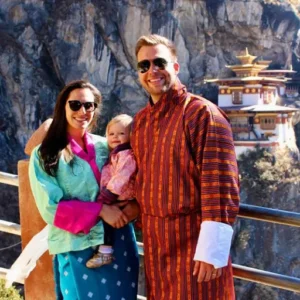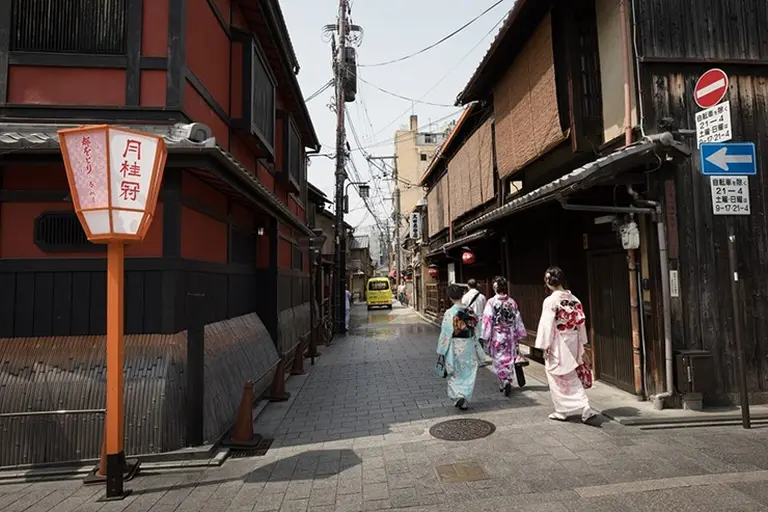Bhutan, the last Himalayan kingdom, offers a deeply spiritual and culturally rich travel experience. However, visiting this country comes with specific regulations and preparations, especially for independent travelers. Below is a comprehensive overview to help you plan your journey.
Independent Travel in Bhutan
While Bhutan welcomes international visitors, it does not allow fully independent travel. Foreign tourists must adhere to several mandatory requirements:
- Local Guide Required: Travelers are not permitted to explore on their own and must be accompanied by a licensed Bhutanese tour guide throughout the trip.
- Sustainable Development Fee (SDF): A daily minimum fee, known as the SDF, is required. This fee contributes to the country’s sustainable development and is part of Bhutan’s “High Value, Low Impact” tourism policy.
- Visa Application Process: All travelers must apply for a visa in advance, typically arranged by a government-approved tour operator.
- Pre-Approved Itinerary: Your travel plan must be approved in advance by Bhutanese authorities.
- Limited Transportation Options: Public transportation is sparse, and most travel is arranged through private vehicles included in the tour.
- Unstable Internet and Mobile Networks: Connectivity can be unreliable, especially in remote areas.
- There are few direct flights: Travelers have to transit through neighboring countries.
- High Season Demand: During peak tourist seasons (spring and autumn), it’s crucial to book services early due to limited availability.
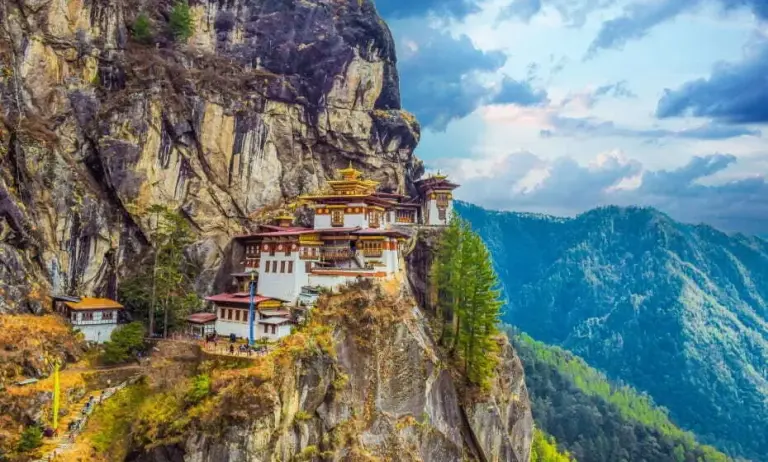
>> What to know before visiting Bhutan – Dos & Don’ts
Solo Travel in Bhutan
Traveling alone in Bhutan presents unique challenges:
- Must Join a Guided Tour: Even solo travelers must be accompanied by a local guide; traveling entirely alone is not permitted.
- Higher Costs: Without companions to share costs, solo travelers often face higher expenses for tours, guides, and accommodations.
- Mental and Physical Readiness: Solo trips in Bhutan require good physical health and mental preparation, especially in high-altitude or rural areas.
- Limited Local Interaction: Language barriers and cultural differences can limit meaningful exchanges with locals.
- Remote Area Isolation: Some regions can feel quite isolated, which may affect solo travelers more significantly.
- Difficult to Find Travel Companions: It’s not always easy to join others or split costs like in typical backpacking destinations.
- No Backpacker-Style Travel: Bhutan does not cater to “DIY” or adventure-style solo travel as seen in other countries.
Bhutan Group Tours
Joining an organized tour is the most convenient and government-compliant way to explore Bhutan:
- Legally Approved: Tours fulfill all official travel requirements and include guides, accommodation, transport, meals, and visas.
- Fixed Itineraries: While convenient, group tours often follow a set schedule with limited flexibility.
- Social Atmosphere: A great option for meeting fellow travelers and sharing experiences.
- Beginner-Friendly: Ideal for first-time visitors who prefer structured travel with local insight.
- Tour Options: Choose between private or shared group tours depending on your preference and budget.
- Fast Processing: Tour companies assist with all visa and logistical arrangements, streamlining the process.
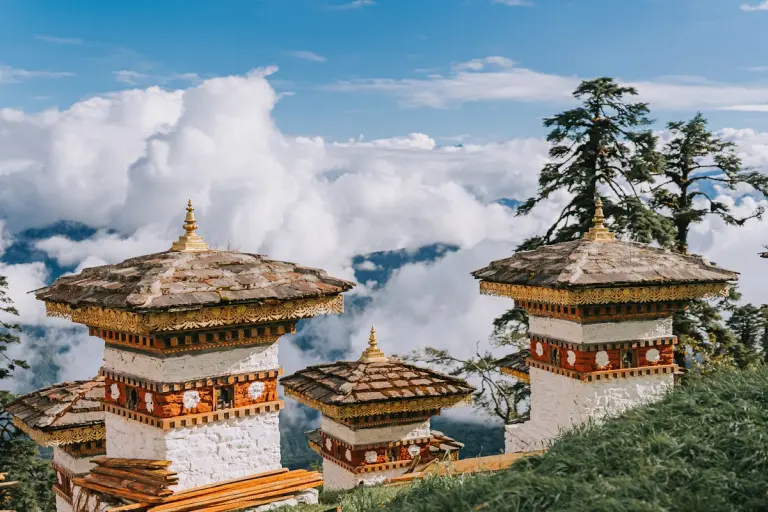
>> Photos reveal the beauty of Bhutan – The happiest country in the World
Private and Small Group Tours
For travelers seeking more flexibility and comfort, private or small group tours are a great alternative:
- Flexible Schedules: Itineraries can be tailored to your interests, unlike fixed group tours.
- Ideal for Families or Friends: A good option for private parties traveling together.
- Customizable Experience: Choose your own accommodations, pace, and activities.
- Personalized Services: Select your preferred guide and tour operator for a more intimate and bespoke experience.
- Higher Costs: Comes at a premium but offers a more tailored and relaxed experience.
Spiritual and Buddhist Travel in Bhutan
Bhutan is a deeply spiritual country rooted in Vajrayana Buddhism. For those visiting with spiritual intentions or to attend religious festivals:
- Dress Modestly: Wear respectful and modest clothing, especially when visiting temples and monasteries.
- Respect Rituals and Customs: Always follow local customs, especially during religious ceremonies.
- Photography Restrictions: Do not take photos inside temples or during rituals unless permitted.
- Festival Etiquette: When attending religious festivals, maintain silence and avoid obstructing sacred rituals.
- Spiritual Itineraries: Many tours offer routes centered around sacred sites, meditation centers, and monasteries.
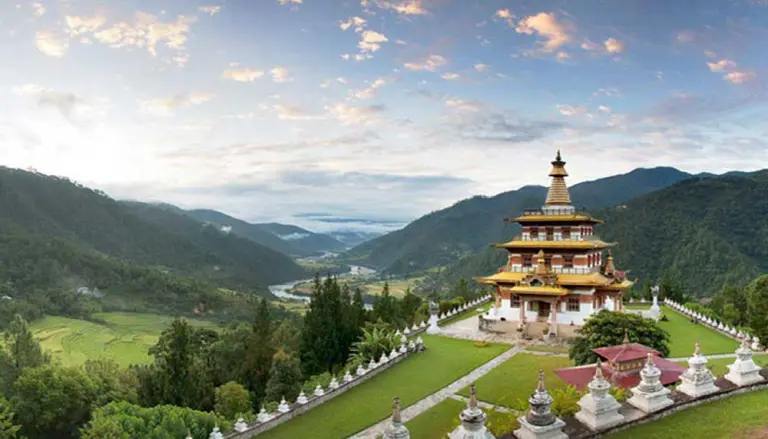
Everything You Need to Know Before Traveling to Bhutan
Planning a journey to the mystical kingdom of Bhutan? This Himalayan gem is known not only for its breathtaking landscapes and deep-rooted Buddhist culture, but also for its unique travel policies and lifestyle that are unlike anywhere else in the world. To ensure your trip is smooth, fulfilling, and respectful of local customs, here’s a comprehensive guide covering Bhutanese cuisine, attractions, accommodations, and essential pre-trip preparations.
Bhutanese Cuisine: Spicy, Simple, and Full of Surprises
Bhutanese food reflects a blend of influences from Tibetan, Indian, and Chinese culinary traditions, but overall, it’s known for being hearty, spicy, and relatively simple in variety. Despite being a Buddhist country, meat is widely consumed. The local diet features plenty of beef, pork, yak meat, cheese, and most notably—chili peppers. In fact, the national dish, Ema Datshi, is a fiery stew of chilies and cheese that’s both beloved and feared by first-timers.
If you’re not a fan of spicy food or unfamiliar flavors, it’s highly recommended to pack some instant noodles, snacks, or dry foods to stay satisfied during your stay. While trying local food is part of the adventure, having a backup will give you peace of mind—especially in more remote areas where food options are limited.
Must-See Attractions: Where Culture and Scenery Collide
Trongsa Dzong is one of Bhutan’s most iconic historical sites and the largest fortress in the country. Perched on a ridge above the Mangde Chhu River, it has long been a strategic location that controlled trade between eastern and western Bhutan. It’s also the ancestral home of the royal family, dating back to 1907, making it a culturally significant destination that every visitor should see.
In addition to Trongsa, don’t miss the Tiger’s Nest Monastery (Paro Taktsang), Punakha Dzong, and Buddha Dordenma Statue—each offering unforgettable views and deep cultural immersion. Hiring a knowledgeable guide can greatly enhance your understanding of the history and spiritual significance behind each site.
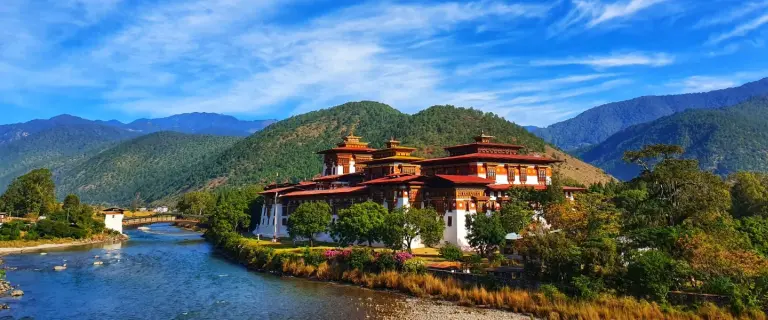
>> Unique cultural traits of the land of the Thunder Dragon, Bhutan
Accommodation in Bhutan: From Luxury to Local Comfort
When it comes to lodging, Paro and Thimphu are the most popular areas with a wide range of options—from upscale resorts to budget-friendly guesthouses. Many hotels are beautifully designed with traditional Bhutanese architecture and offer stunning views of the valleys and mountains.
Expect to pay between $100–$150 USD per night, though prices can go higher for luxury lodges or during peak tourist seasons. It’s best to book well in advance, especially if you’re planning to visit during a local festival (Tshechu), as rooms fill up quickly.
Important Things to Prepare Before You Go
Visa Application
Bhutan has a unique tourism policy—independent travel is not permitted. You must book your trip through an approved Bhutanese tour operator or international partner, who will arrange your visa ($40 USD), guide, transportation, and accommodations. This system is designed to preserve the country’s culture and environment, while also supporting sustainable tourism.
Currency Exchange
The official currency is the Ngultrum (BTN), which is pegged to the Indian Rupee. US dollars are accepted at many tourist shops and hotels, but credit card use is limited, especially outside major towns. It’s best to exchange currency at Paro International Airport or bring enough cash for your entire trip.
SIM Cards & Internet
You can purchase a local SIM card at the airport for around 300–700 BTN depending on your data needs. Bhutan’s mobile network is fairly reliable in towns but may be weak or unavailable in rural or mountainous regions. Free Wi-Fi is available at many hotels and cafés, though speeds can vary.
What to Pack
- Warm layers: Temperatures can drop significantly, especially in higher altitudes.
- Scarf and hat: Useful both for warmth and temple visits.
- Universal power adapter: Bhutan uses three-pin flat plugs (Type D/G).
- Travel medicine: Include altitude sickness tablets, motion sickness medication (especially for long, winding drives), and basic first aid.
- Reusable water bottle: Bhutan is eco-conscious, so avoiding plastic is encouraged.
Cultural Etiquette
- Dress modestly, especially when visiting temples, dzongs (fortresses), or royal palaces. No shorts or sleeveless tops allowed.
- Never point at or touch Buddha statues or sacred objects.
- Do not smoke—Bhutan bans the sale and public consumption of tobacco. Violators may face fines or arrest.
By preparing in advance and respecting local customs, your journey to Bhutan will be more than just a trip—it will be a deeply spiritual and transformative experience. Let go of modern distractions, open your heart to new perspectives, and allow the Land of the Thunder Dragon to show you the joy of mindful travel.

>> Top Pilgrimage Destinations Around the World
Final Tips
Bhutan is not a destination for spontaneous travel. However, its cultural richness, pristine landscapes, and spiritual depth more than reward the preparation involved. By understanding and respecting local rules and traditions, travelers can enjoy a truly transformative experience in this Himalayan kingdom.



